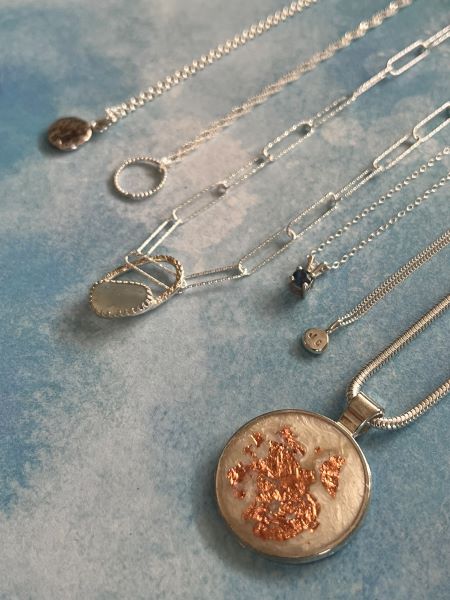Chains aren’t just for holding pendants — they are an essential component in jewellery design that contribute to the look, movement, and durability of a piece. From fine necklace chains to bold standalone styles, knowing your options helps you choose the best one for your project. Here’s a breakdown of some of the most popular chain types and what they’re best used for.
Use our guide to the different jewellery chain styles to help you choose the right chain for what you need and one that will complement your jewellery designs.
Curb Chain
Curb chains are composed of uniform, twisted links that lie flat when worn. This makes them comfortable and particularly well-suited to both delicate and bold styles. The chain’s structure allows it to reflect light attractively, especially when diamond-cut.
- Benefits: Smooth drape, durable construction, good for polishing finishes
- Works well for: Statement necklaces, men’s jewellery, charm bracelets, layering
Tip: Wider curb chains are strong enough for heavier pendants. Thinner curb chains are excellent for delicate layered looks
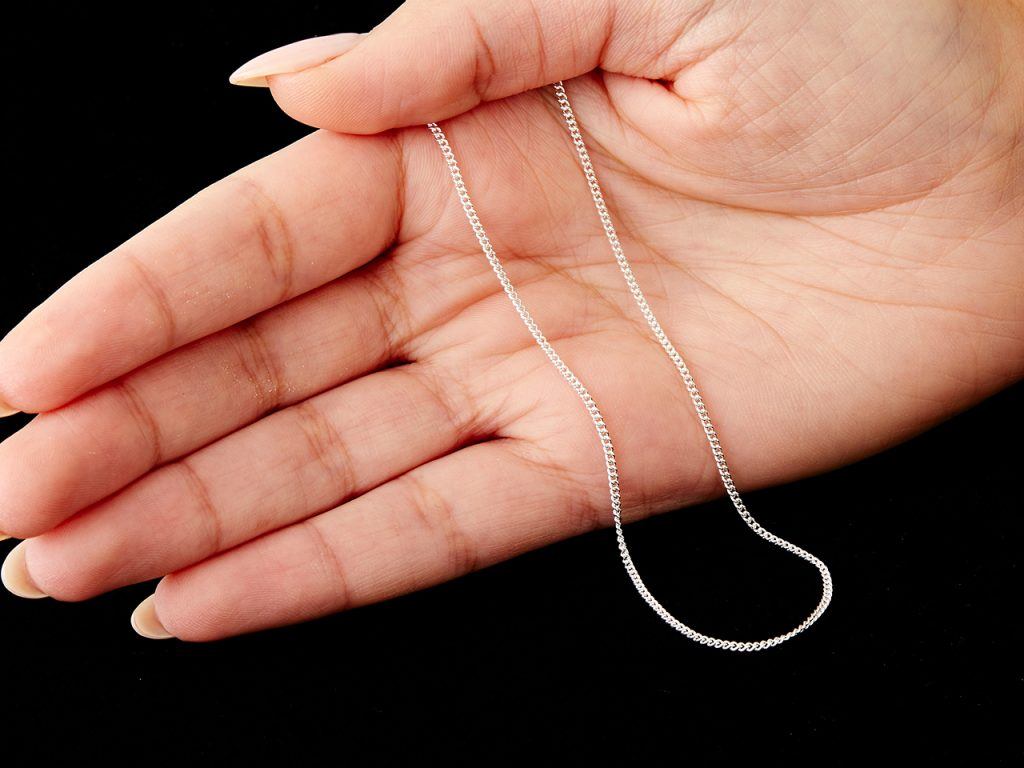
Trace Chain
Trace chains are made with small, round or oval links connected in a uniform pattern. Their simplicity makes them ideal for refined, delicate styles where you don’t want the chain to overpower the pendant or design.
- Benefits: Lightweight, minimal visual interference, ideal for subtle pieces
- Works well for: Fine pendants, dainty necklaces, bridal jewellery, anklets
Tip: Choose diamond-cut versions if you want extra shine without bulk.

Belcher Chain
Belcher chains use wide, round or D-shaped links that are equal in size. This style offers an excellent combination of strength and visual weight, which is why it’s frequently used with heavier pendants or as a standalone piece.
- Benefits: Strong yet stylish, good load-bearing capacity, gender-neutral appeal
- Works well for: Chunkier pendants or locket necklaces, men’s and unisex jewellery
Tip: The larger gaps in the links make it easier to attach findings or charms directly.

Rope Chain
Rope chains are formed by tightly twisting multiple strands of metal links in a spiral pattern, creating a textured surface that sparkles from all angles. Their durability and visual impact make them ideal for statement jewellery.
- Benefits: High visual impact, strong and durable, doesn’t easily kink
- Works well for: Standalone necklaces, bold pendants, layered styles
Tip: Rope chains are visually busy — pair them with simple pendants to avoid overwhelming your design.
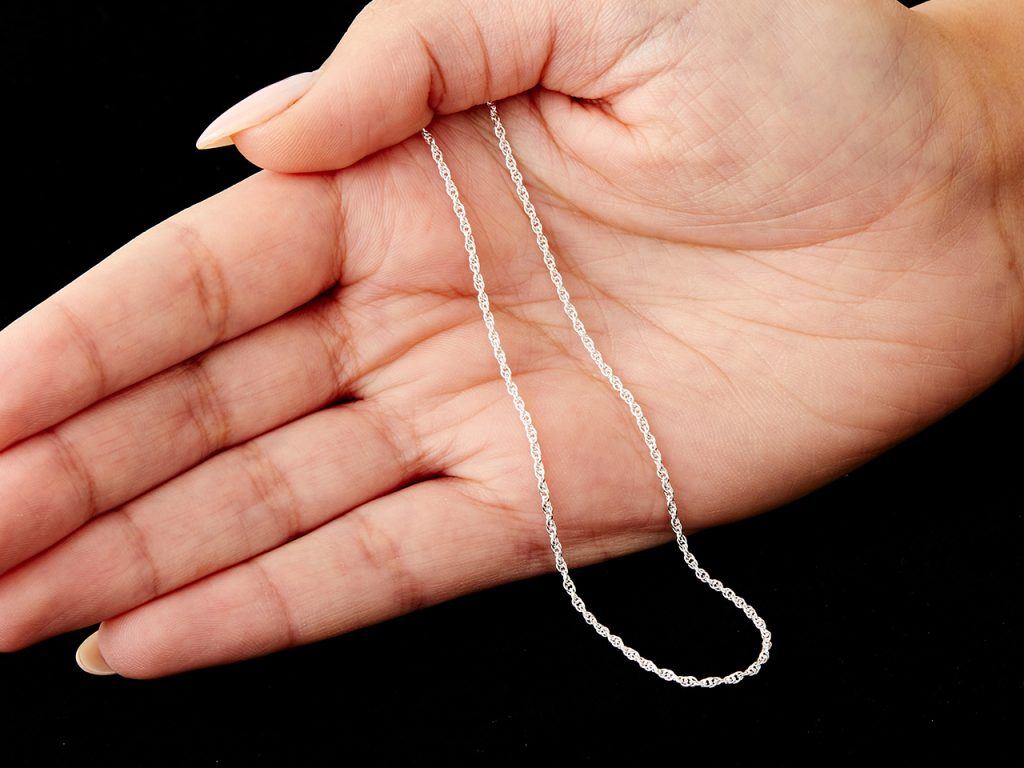
Snake Chain
Snake chains are made from tightly connected curved plates or bands, forming a flexible tube with a silky surface. They reflect light very well and feel smooth against the skin, giving a luxury finish to any design. This style is highly flexible and works wonderfully as a standalone piece or with a small pendant.
- Benefits: Elegant, highly flexible, contemporary look
- Works well for: Modern minimalist designs, pendant necklaces, everyday wear
Tip: Avoid attaching heavy or sharp-edged pendants, as snake chains can kink and are harder to repair than open-link chains.
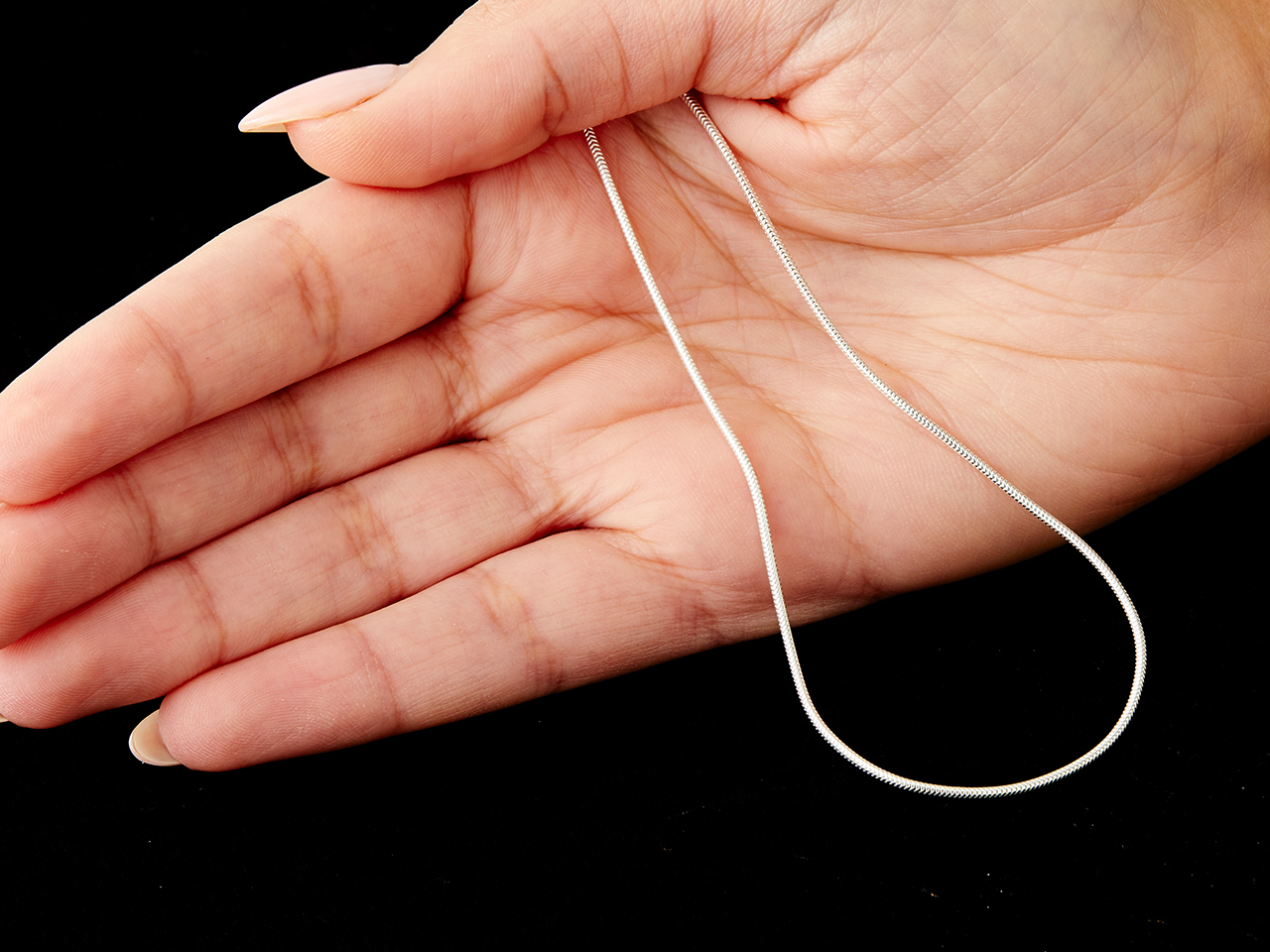
Choosing the Right Chain for Your Design
When selecting a chain, consider the following:
- Necklace Length: From chokers to rope lengths, the length affects how the piece sits on the body and what it pairs well with.
- Style Purpose: Will the chain be the focal point, or should it support another element like a pendant?
- Weight & Strength: Heavier pendants need sturdier chains such as belcher or thick curb styles.
- Chain Finish: Choose a finish that complements your findings – whether that’s polished, diamond-cut, or textured.
Choosing the Right Necklace Length
Determining the length of your necklace depends on how you’d like it to hang – whether you’re creating chokers, traditional princess-style necklaces, or longer pieces that sit on the bust. Click here for a helpful guide to help you measure and cut the amount of chain you need for your chosen type of necklace.
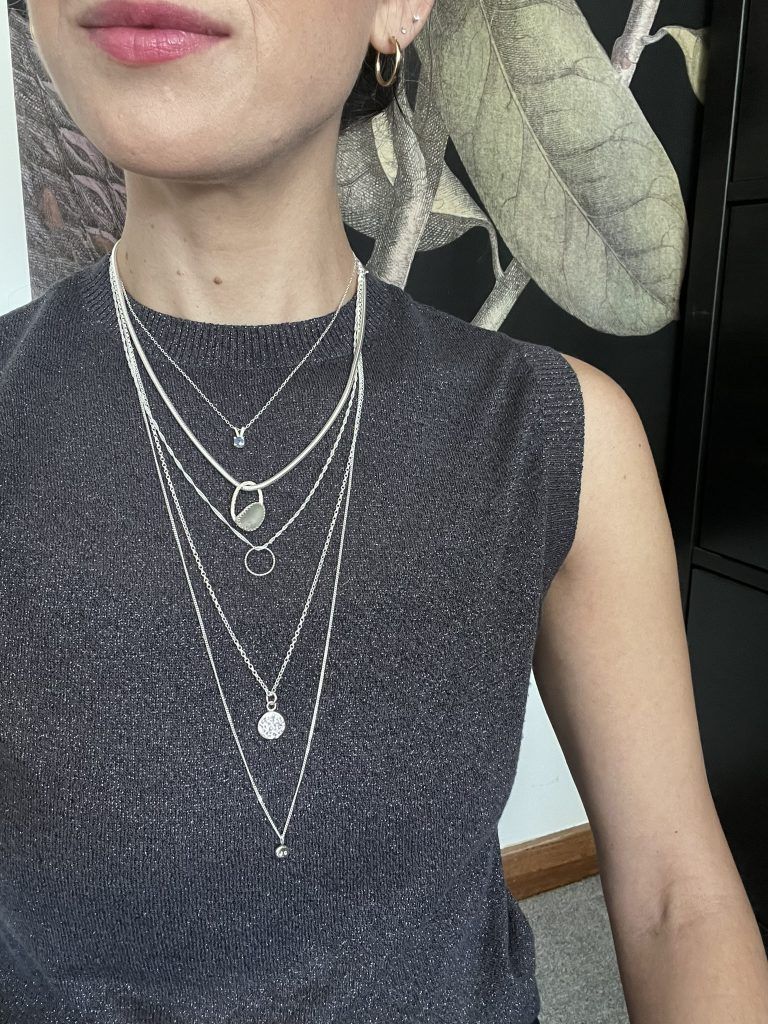
Choosing the right chain isn’t just about aesthetics — it’s about how a piece functions, wears and complements your overall design. Whether you’re working on a delicate pendant necklace, a bold statement piece or a bespoke bracelet, understanding the strengths and characteristics of different chain styles helps you make informed creative choices.
Shop all of the jewellery chain styles we’ve talked about in our guide and much more over at Cooksongold.com.

Cooksongold

